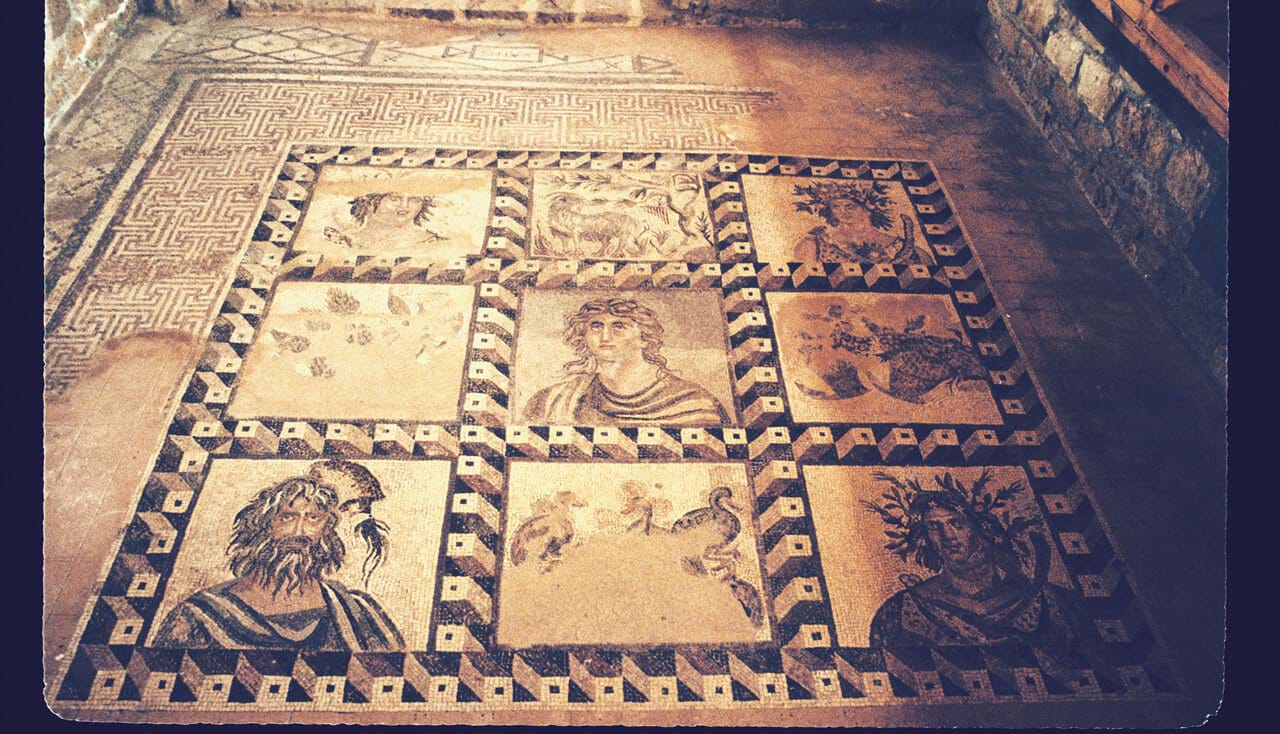The mosaic floors of four Roman villas are the highlight of the Pafos archaeological site. Built between the second and fourth centuries CE, the villas were later destroyed by earthquakes, their rubble taken away for use in other structures. Now the floors offer clues to life in these opulent homes. Craftsmen arranged tesserae—cubes usually measuring one square centimetre—into colourful designs, setting the pieces into wet plaster. The tesserae were generally made from stone, but the most vivid colours (orange, yellow, green, and blue) were formed from glass. A figurative floor design usually has a background of plain white tiles. Look for brown shadows formed under the feet of human characters, though; they create a grounded perspective. The craftsmen worked from patterns, copying designs originally made for another home, so the design may not fit the space, as in room 8 of the House of Dionysos. The figures depict stories from Greco-Roman mythology. Sometimes inscriptions in the mosaics name key characters; museum signage and the Guide to the Paphos Mosaics identify the myths. Keep in mind that the walls and ceilings were also decorated: a three-dimensional floor border, for example, reflected the dentil on the ceiling. Sometimes a geometric border ties into the myth displayed, as in room 36 of the Villa of Theseus. The mosaic depicts Theseus slaying the Minotaur, while its border represents the labyrinth and the thread Ariadne provided to lead Theseus out of it. As you pass from room to room, imagine how the Romans were inspired by the decorative floors as they went about their lives. The site is just a five-minute walk from Almyra.
Photo credits: Room 3 of House of Dionysos, The Four Seasons, Institute for the Study of the Ancient World, New York, USA; Room 36 of Villa of Theseus, Theseus and the Minotaur, Friedhelm Dröge.
